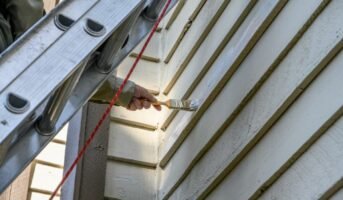Packing fragile items is a task filled with precision and requires focus. It can go wrong, especially if you are moving. Fragile items like glassware, ceramics, electronics, and other delicate things require care. In this article, we will provide you with a step-by-step guide on how to pack fragile items while moving.
See also: How to pack mattress for moving?
Step 1: Gather the supplies
Before you begin packing the fragile items, make sure you have the necessary supplies to pack items:
- Sturdy boxes in various sizes
- Packing tape
- Bubble wrap
- Packing paper or newspaper
- Packing peanuts or foam inserts
- Styrofoam sheets or cardboard dividers
- Marker for labelling
Step 2: Sort and organise
Begin by sorting the fragile items into different categories. You can sort the items based on their size, shape, and fragility. This will determine which items require more packing and care and also which items would be packed together. You can keep similar items like glassware, porcelain, and electronics.
Step 3: Select the right boxes
Choosing the appropriate boxes is important. Use new or only one-time used boxes to pack these items as they can provide better support for your items. Make sure the boxes are clean and do not contain any dust. The bottom of each box should include a double layer of packing tape.
Step 4: Wrap the items individually
Each fragile item should be wrapped individually with appropriate materials. Wrap glassware, ceramics, and delicate figurines with a layer of bubble wrap or packing paper. The wrap should be secured with tape so that there are no loose ends. For electronics use the original packing or you can wrap the items in bubble wrap and place them in a box with padding. The jewellery and small items should be packed in pouches that are cushioned with soft materials like foam and cotton.
Step 5: Cushion the boxes
The bottom of the box should be filled with foam, packing peanuts, or newspapers to have a cushioning effect on your boxes. During transport, this cushioning effect will help in absorbing shock.
Step 6: Fill the empty boxes
Some items are to be packed in layers like dishes and glassware. The voids or gaps should be filled perfectly in each set of boxes. The goal is to fill the boxes and have a snug fit as it prevents items from staying in place while moving.
Step 7: Seal the box and label it
After packing the box, seal it with proper taping so that it is sealed tightly. You should label the box “Fragile” to differentiate it from the rest of the boxes. Label each of the boxes with precision.
FAQs
What kind of packaging is suitable for fragile products?
Packing foam is a great lightweight material and is suitable for fragile products.
What is the alternative to thermocol packing?
Honeycomb paper is the best alternative to thermocol.
What is an example of a fragile thing?
Some examples of fragile goods can be and are not restricted to glass items, laboratory materials, musical instruments, technological accessories, marble, tiles, porcelains, optical instruments, and valuable collectables.
Should I write fragile on a box?
Yes, you should write fragile on a box to keep it differentiated from the rest.
What is the best foam for packaging?
Polyethylene is non-absorbent, making it the best foam for packaging.
What is the most fragile glass?
Annealed glass is the most fragile type of manufactured glass.
What is the easiest material to break?
Glass is the easiest material to break.
| Got any questions or point of view on our article? We would love to hear from you. Write to our Editor-in-Chief Jhumur Ghosh at jhumur.ghosh1@housing.com |

Shimon Oberoi, an economics graduate from Rajdhani College, University of Delhi, strives to simplify the real estate world through her compelling and well-researched content. She has experience in domains like entertainment and economic concepts, among others. When not creating content, she enjoys watching movies, listening to music, and reading fictional books.












